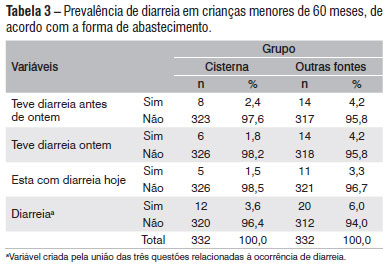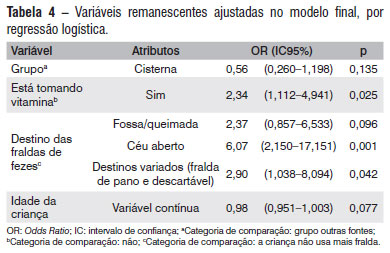The present text evaluated the diarrhea prevalence in children under 60 months, according to water supply. An epidemic study was conducted with quasiexperimental design with 664 children, 332 who lived in residence that had cistern and 332 that use water from another source. Diarrhoea occurrence in the last 72 hours was the dependent variable, the others informations were obtained by structured questionnaires. Total diarrhoea prevalence was of 5%, however with no significant difference among the groups. The variables that explained the disease were child's age; if it was taking vitamin and where the dirty diapers with the child's feces were displaced. There were no significant difference among the groups in water microbiological analyses; in other words, the use of rainwater had might not provided improvements in the access of a better quality water supply when compared with the other alternative sources. However, it has to be considered faults in handling and water treatment. It stands out the need of sanitary practices improvement of rural area population, so that personal and home hygiene and in relation to consumed water could be incorporated as routine habits.
cistern; diarrhoea; rain water; rural sanitation; water supply






